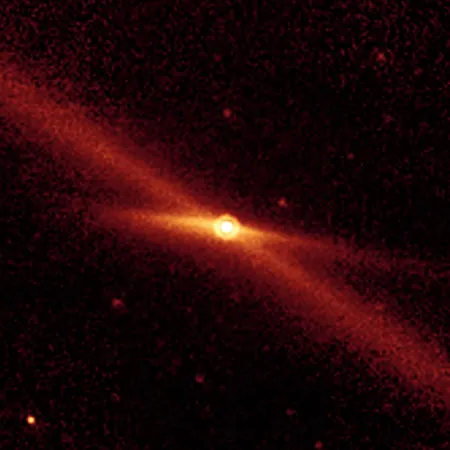
Space Debris: The Looming Crisis Endangering Astronauts and Satellites Alike
2024-10-10
Author: Liam
As our planet races into the future, it finds itself encased by a staggering number of nearly 30,000 large objects—many bigger than a softball—whirling around at alarming velocities. This alarming situation has drawn dire warnings from experts, notably Dan Ceperley, COO of LeoLabs, who recently shared with Forbes, “This grim reality means that collisions are not a question of if, but when.”
A Grave Danger to Human Life
The risk of space debris is not just a theoretical concern; it has serious implications for human life, particularly for astronauts on missions outside the safety of Earth. Ceperley highlighted the lethal threat posed by even the tiniest of fragments. “Any size fragment above a few millimeters is likely lethal to astronauts,” he cautioned. Although LeoLabs possesses the capability to track items as small as four inches in diameter, a significant gap remains in detecting smaller debris, which could be far more numerous and perilous.
Space Junk is No Myth: Damage Already Inflicted
To date, the human toll from space debris remains zero, but the damage caused is real and concerning. The incident in 2021, where a small fragment struck and punctured the Canadarm2 robotic arm outside the International Space Station (ISS), serves as a stark reminder of the risks. Experts like McKnight have stressed the increased danger in the higher realms of low-Earth orbit, where neglected upper stages of rockets from both the United States and the former Soviet Union linger menacingly.
Notably, there have been multiple near-miss incidents, heightening fears within the space community about the implications of this ever-growing cloud of debris. The destruction of operational satellites further underscores the gravity of the threat that space junk presents.
Future of Space Exploration at Risk?
With the rise in satellite launches and increasing activity in space, the emergency surrounding space debris is becoming more pressing. Companies across the globe are now being called upon to develop cleaning solutions to address the increasing crisis. From nets to capture debris to laser systems aimed at altering the trajectory of hazardous objects, innovation is crucial to prevent catastrophic collisions.
Thus, as we venture deeper into the cosmos, we must not lose sight of the critical need to maintain a safe environment in our near-Earth space. This ticking time bomb of space debris demands urgent attention—a race against time to preserve the future of space exploration and ensure the safety of those who venture beyond our planet's atmosphere. Will we be able to act in time, or will the next collision ring alarm bells for us all?









 Brasil (PT)
Brasil (PT)
 Canada (EN)
Canada (EN)
 Chile (ES)
Chile (ES)
 España (ES)
España (ES)
 France (FR)
France (FR)
 Hong Kong (EN)
Hong Kong (EN)
 Italia (IT)
Italia (IT)
 日本 (JA)
日本 (JA)
 Magyarország (HU)
Magyarország (HU)
 Norge (NO)
Norge (NO)
 Polska (PL)
Polska (PL)
 Schweiz (DE)
Schweiz (DE)
 Singapore (EN)
Singapore (EN)
 Sverige (SV)
Sverige (SV)
 Suomi (FI)
Suomi (FI)
 Türkiye (TR)
Türkiye (TR)